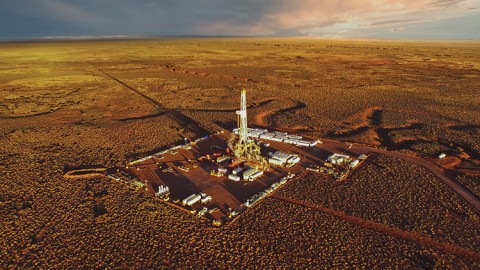To begin with, the coronavirus has affected the global energy markets as well as the primary energy consumption in multiple ways. While this global pandemic was only seen as a minor threat to the city of Wuhan in China, its turbulent and intense effect on the energy market hasn’t been seen since the Swine Flu that spread between 2009 and 2010, with a similar global impact. The unpredictability of the coronavirus’s spread has caused a major fluctuation in the oil and gas industry, especially when concerned with supply and demand.
General Overview
The coronavirus has affected multiple markets and led to a series of events. For instance, as of this month, Lufthansa Airlines has cut its flights by 50% due to multiple cancellations (because of the uncontrollable spread of the virus), academic institutes have turned to online lectures due to low student turnout and, of course, China’s economic growth rate has decreased to nearly 5% (i.e. the slowest economic expansion rate seen over the last three decades). If all of these industries are affected by the coronavirus, one can only imagine the effect that this global pandemic has on the world’s most essential and influential markets: the energy market.
The energy market has been hit by the virus in ways that neither investors nor sellers had expected. For instance, it was announced recently that the Organization of the Petroleum Exporting Countries (OPEC) had failed to agree on supply cuts in production. This is an important decision for OPEC countries as the reduction in supply directly affects the stability of the price of oil per barrel as primary energy consumption and demand decreases dramatically.
Crude Oil Fluctuations
In fact, oil prices have fallen by over 9%, making it the lowest rate since 2016. In an attempt to resolve the issue in the surplus of oil supply, OPEC reached out to Russia to suggest a two-part alternative to this dilemma: (i) to aid in the extension of the current “production cuts of 2.1 Million Barrels (MMbbl) through to the end of 2020” and (ii) to implement a slash in nearly 1.5 MMbbl/d. Seeking a solution on the matter, OPEC still remains in talks to propose other backup solutions.
During Q1 2020, US oil prices have declined drastically since the outbreak of the Coronavirus. As a matter of fact, between January 2nd, 2020 and March 6th, 2020, oil prices have decreased from $64 to $41, respectively. A near 33% reduction in oil prices demonstrated the lack of demand for oil during a time in which people are limiting the time spent outside their homes. The decline is found to be the lowest since the financial crisis that occurred in 2008. Additionally, as stated by an Oil and Gas Research Analyst who preferred anonymity, said that “this is not the first time the supply and demand of oil has changed in Egypt.” The Oil and Gas Research Analyst added that, “with or without COVID-19, companies should always be prepared and forecast the future of the industry. I think the lesson learned this time is that oil prices are not always stable and so we should take care of this moving forward when we forecast supply and demand.”
Consequently, predicted growth for 2020 is expected to be near zero unless a sort of curtailment occurs by Q2 that causes a minor increase in demand by the end of the year. However, the advantage during this difficult economic situation is that lower demand in primary energy has not only resulted in a decrease in the consumption of fuel but has also decreased carbon emissions. In fact, according to an article published by the Washington Post, China – which is currently the country with the highest GHG emissions – has found a reduction in its local emissions by over 25% as a result of the decrease in demand in the energy markets.
Case Study
Recent studies have shown that capital expenditures (CAPEX) of major oil and gas companies have fluctuated drastically throughout the course of the year. For instance, Saudi Aramco has revised its CAPEX values by nearly USD 10 billion (i.e. from USD 35 billion to USD 25 billion). Following in Saudi Aramco’s footsteps, Chevron – an American oil and gas company – has also decreased its CAPEX costs by USD 5 billion (i.e. from USD 25 billion to USD 20 billion). Other oil and gas companies have also revised their respective CAPEX costs, but on smaller scales; British Petroleum (BP) as well as Equinor, revised CAPEX costs by nearly USD 2 to 3 billion. The industries deeply impacted by the fluctuating crude oil supply and demand include the transportation sector (i.e. through jet fuel for airplanes and gasoline for automobiles). In fact, it was predicted by the International Energy Agency (IEA) that the type of oil and gas product that would face the most challenges is the shale gas industry, with crude oil suffering expected reasonable fluctuations.
However, the oil and gas industry is not new to the impacts of outbreaks or global emergencies. As a matter of fact, when the Spanish Flu spread during the early 20th Century, petroleum byproducts were not impacted for two main reasons; these reasons include that the petroleum hydrocarbons were yet to be in high demand in addition to the fact that such products were not yet common or widespread. Later on, during the course of the Severe Acute Respiratory Syndrome (SARS), which began at the turn of the 21st century, GCC and Asian regions were impacted severely. However, the closest example similar to that of the coronavirus pandemic is that of the Swine Flu (H1NI). This pandemic was one with a large reach as it impacted multiple countries worldwide .
In conclusion, it can be noted that the overall growth and demand in the crude oil market has decreased largely over the course between Q1 and Q4 in 2020. However, the positive outlook on this subject is that the environmental impact in terms of Greenhouse Gasses (GHG) and carbon emissions have greatly reduced, giving a silver lining to the global crisis. Additionally, with the second wave on the brink of completion and vaccines expected to become readily available in the market over the coming year or so, the supply and demand of crude oil would be expected to take off steadily.








